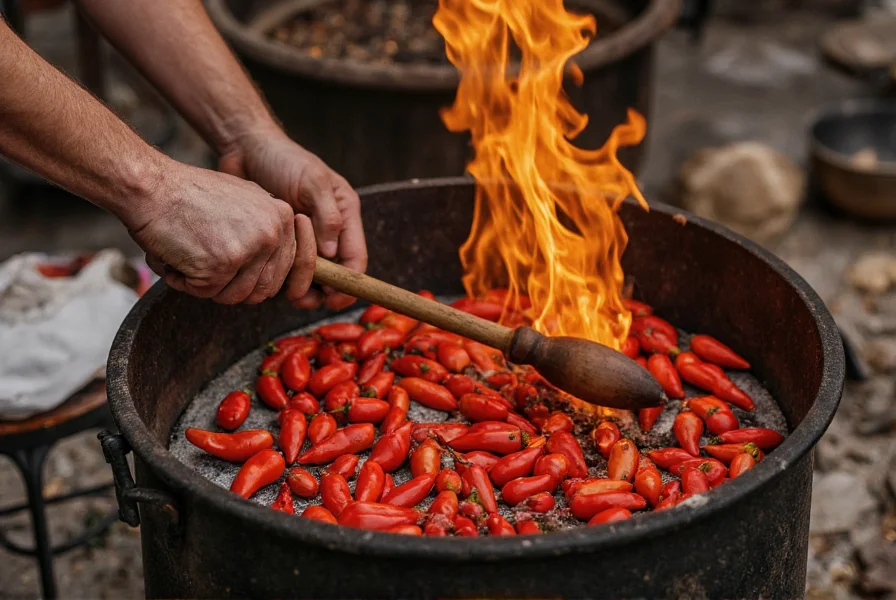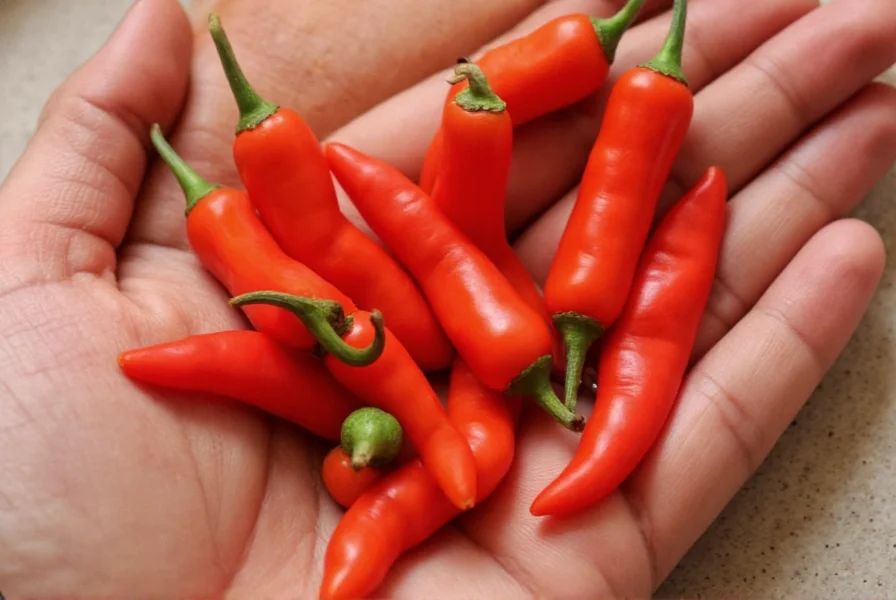The Hatch chili pepper isn't just another spicy ingredient—it's a culinary treasure with deep cultural roots in New Mexico. When you ask what is a hatch chili pepper, you're inquiring about one of America's most distinctive regional foods, protected by geographical indication much like Champagne or Parmigiano-Reggiano.
Origin and Geographic Significance
Hatch chilies get their name from the small village of Hatch in New Mexico's fertile Rio Grande Valley. This region's unique combination of high altitude, intense sunlight, and mineral-rich soil creates the perfect conditions for growing chilies with distinctive flavor profiles. While chilies are grown throughout New Mexico, only those cultivated in the Hatch Valley region can legally be called "Hatch" chilies.
The term "Hatch" has become so culturally significant that in 2014, the New Mexico chile was officially designated as the state's signature crop. The annual Hatch Chile Festival, held every first weekend in September, draws thousands of visitors to celebrate the harvest with roasting demonstrations, cooking competitions, and cultural events.

Understanding Hatch Chili Varieties
Contrary to popular belief, "Hatch" isn't a single variety but rather refers to several New Mexico chile cultivars grown in the region. The flavor and heat can vary significantly depending on the specific variety and growing conditions:
| Variety | Heat Level (Scoville) | Flavor Profile | Best Uses |
|---|---|---|---|
| Hatch Mild | 500-1,000 | Sweet, grassy, vegetal | Stuffed peppers, sauces, salsas |
| Hatch Medium | 2,500-4,000 | Earthy, slightly smoky | Enchiladas, stews, roasted dishes |
| Hatch Hot | 5,000-8,000 | Sharp, intense, complex | Hot sauces, spicy condiments |
Understanding the hatch chili pepper heat level is crucial for home cooks. The same plant can produce peppers ranging from mild to hot depending on environmental stressors like water availability and temperature fluctuations. This natural variation is part of what makes Hatch chilies so interesting to culinary enthusiasts.
Seasonality and Fresh vs. Preserved
True Hatch chili season runs from late July through September, with peak availability in August and early September. During this period, you'll find fresh Hatch chilies at farmers' markets and grocery stores across the Southwest. The distinctive smell of roasting Hatch chilies fills the air as vendors use rotating drums to char the skins.
Many people wonder when is hatch chili season outside of these months. While fresh chilies are seasonal, you can enjoy Hatch flavors year-round through:
- Frozen roasted Hatch chilies (flash-frozen at peak freshness)
- Canned Hatch green chilies
- Dried Hatch chilies (often labeled as New Mexico chilies)
- Hatch chili powder and sauces
For the most authentic experience, seek out fresh or frozen Hatch chilies during the harvest season. The flavor difference between seasonal and preserved chilies is significant—fresh Hatch chilies have a brighter, more complex flavor profile.
Culinary Applications and Substitutes
The versatility of Hatch chilies makes them a favorite among chefs and home cooks. Their flavor bridges the gap between bell peppers and spicier varieties like jalapeños, making them suitable for a wide range of dishes.
When exploring how to use hatch chili peppers, consider these classic applications:
- Roasting: Essential for developing flavor and loosening the skin. Roasted Hatch chilies can be frozen for year-round use.
- Chile Rellenos: Stuffed with cheese and battered, this is perhaps the most famous Hatch preparation.
- Green Chile Stew: A New Mexican comfort food staple featuring cubed meat and roasted Hatch chilies.
- Sauces and Salsas: Pureed roasted Hatch chilies form the base of many Southwestern sauces.

If you're wondering about the difference between hatch and jalapeno, the contrast is significant. While jalapeños typically measure 2,500-8,000 Scoville units with a bright, grassy heat, Hatch chilies offer more complexity with earthy, smoky notes and a more gradual heat progression. Jalapeños make a poor substitute for Hatch chilies in traditional New Mexican dishes.
When Hatch chilies aren't available, consider these substitutes based on what you're making:
- For mild applications: Poblano peppers (though less flavorful)
- For medium heat: Anaheim peppers (closest flavor profile)
- For hot applications: Combine jalapeños with a touch of cumin for complexity
Purchasing and Storage Guidelines
When selecting fresh Hatch chilies, look for firm, glossy peppers with deep green color and no soft spots. The best specimens will feel heavy for their size and have smooth, unblemished skin. Avoid chilies with wrinkles or dark spots, which indicate age.
Proper storage is essential for maximizing shelf life. Fresh Hatch chilies will keep for 1-2 weeks in the refrigerator's crisper drawer. For longer storage:
- Roast and freeze: Roast, peel, and freeze in airtight containers (up to 1 year)
- Canning: Properly canned Hatch chilies last 1-2 years
- Drying: String and hang to dry, then store whole or grind into powder
Many consumers mistakenly believe all green chilies labeled "Hatch" are authentic. To ensure you're getting the real thing, look for the Hatch Chile certification logo or purchase directly from New Mexico growers during the harvest season.
Cultural Significance Beyond the Kitchen
The Hatch chili represents more than just a food item—it's a cultural symbol of New Mexican identity. For generations, families have gathered to roast and preserve chilies, creating traditions that span generations. The distinctive smell of roasting chilies evokes powerful memories for New Mexicans, wherever they may live.
The economic impact is substantial too. The New Mexico chile industry generates over $500 million annually and supports thousands of jobs. When you purchase authentic Hatch chilies, you're supporting a centuries-old agricultural tradition that's deeply woven into the fabric of Southwestern culture.
What makes a Hatch chili pepper different from other green chilies?
True Hatch chili peppers are grown exclusively in the Hatch Valley region of New Mexico. This specific geographical area with its unique soil composition, altitude, and climate creates chilies with distinctive flavor characteristics that can't be replicated elsewhere. While other regions grow New Mexico-style chilies, only those from the Hatch Valley can legally be called 'Hatch' chilies.
How hot are Hatch chili peppers compared to jalapeños?
Hatch chili peppers range from mild (500 Scoville units) to hot (8,000 Scoville units), while jalapeños typically range from 2,500-8,000 Scoville units. The heat experience differs significantly - Hatch chilies deliver a more gradual, complex heat with earthy notes, while jalapeños provide a sharper, more immediate burn. Mild Hatch chilies are actually less hot than most jalapeños.
When is the best time to buy fresh Hatch chilies?
Fresh Hatch chilies are available from late July through September, with peak season in August and early September. This is when you'll find the highest quality, most flavorful chilies at farmers' markets and grocery stores. During this season, many vendors offer roasting services that enhance the chilies' natural flavors.
Can I grow authentic Hatch chili peppers outside of New Mexico?
While you can grow New Mexico chile varieties outside the Hatch Valley, they won't be authentic Hatch chilies. The specific terroir of the Hatch Valley—its soil composition, altitude, water composition, and climate—creates the distinctive flavor profile that defines true Hatch chilies. Plants grown elsewhere may look similar but will lack the characteristic flavor complexity.
How should I store roasted Hatch chilies for long-term use?
For best results, roast Hatch chilies, remove the skins, and freeze them in airtight containers or vacuum-sealed bags. Properly frozen Hatch chilies maintain excellent flavor for up to one year. Avoid canning unless you follow proper food safety procedures, as improperly canned chilies can develop botulism. Never store roasted chilies in oil at room temperature due to botulism risk.











 浙公网安备
33010002000092号
浙公网安备
33010002000092号 浙B2-20120091-4
浙B2-20120091-4